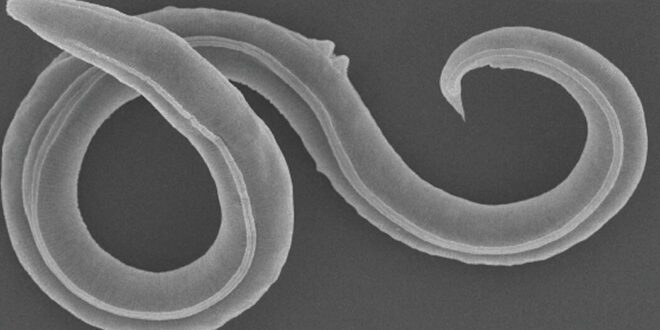Ancient Worms Revived After Being Frozen for Thousands of Years
At a time when the mighty woolly mammoth roamed the Earth, some 46,000 years ago, a minuscule pair of roundworms became encased in the Siberian permafrost.
Millenia later, the worms, thawed out of the ice, would wriggle again, and demonstrate to scientists that life could be paused — almost indefinitely.
The discovery, published this week in the peer-reviewed journal PLOS Genetics, offers new insight into how the worms, also known as nematodes, can survive in extreme conditions for extraordinarily long periods of time, in this case tens of thousands of years.
In 2018, Anastasia Shatilovich, a scientist from the Institute of Physicochemical and Biological Problems in Soil Science RAS in Russia, thawed two female worms from a fossilized burrow dug by gophers in the Arctic.
Revival of Ancient Worms in Siberian Permafrost
The worms, which were buried approximately 130 feet in the permafrost, were revived simply by putting them in water, according to a news release from the Max Planck Institute of Molecular Cell Biology and Genetics in Germany.
Called Panagrolaimus kolymaensis, after the Kolyma River in Russia, where they were found, the worms were sent to Germany for further study. The creatures, which have a life span measured in days, died after reproducing several generations in the lab, researchers said.
Using radiocarbon dating, researchers determined the specimens were frozen between 45,839 and 47,769 years ago, during the late Pleistocene.
The roughly millimeter-long worms were able to resist extreme low temperatures by entering a dormant state called cryptobiosis, a process researchers at the institute have been trying to understand.
No nematodes had been known to achieve such a dormant state for thousands of years at a time, Teymuras Kurzchalia, a professor emeritus at the institute who was involved in the study, said on Saturday.
Pause and Restart of Life: The Astonishing Discovery
“The major take-home message or summary of this discovery is that it is, in principle, possible to stop life for more or less an indefinite time and then restart it,” Dr. Kurzchalia said.
Researchers identified key genes in the nematode that allow it to achieve the cryptobiotic state. The same genes were found in a contemporary nematode called Caenorhabditis elegans, which can also achieve cryptobiosis.
“This led us, for instance, to understand that they cannot survive without a specific sugar called trehalose,” Dr. Kurzchalia said. “Without this sugar, they just die.
While there are no clear practical applications for a deep understanding of cryptobiosis, that should not be a reason to stop the research, Dr. Kurzchalia said.
The discovery of semiconductors, or of the double helix structure of DNA, he said, took decades to yield a practical use, but ultimately turned out to be revolutionary.
Potential Engineering of Cryptobiosis and Environmental Adaptation
“That’s the interest of science,” he said. “You end somewhere you didn’t presume.”
Cryptobiosis could, perhaps one day, be engineered by humans, he added.
Implications for Global Warming and Conservation
Another researcher in the study, Dr. Philipp Schiffer of the Institute for Zoology at the University of Cologne, said the more relevant application of the findings “is that in times of global warming we can learn a lot about adaptation to extreme environmental conditions from these organisms, informing conservation strategies and protecting ecosystems from collapsing.”
The Siberian permafrost has long offered the scientific community a window into the organisms of the distant past. Ancient viruses, mummified bodies, and a suite of microscopic creatures have been resurrected from the ice over the years.
Amid the Covid pandemic, some have expressed concerns about unearthing ancient microorganisms, fearing that doing so could have deadly consequences for mankind.
Caution Amid the Possibility of Thawing Permafrost
Dr. Kurzchalia conceded that, theoretically, such a thing was possible, though he emphasized that the study of these organisms is conducted in sterile, lab-controlled settings.
A more prudent concern, in Dr. Kurzchalia’s view, is the threat of global warming significantly thawing the permafrost in Siberia. In that case, there would be no control over what is reintroduced to the world.
Though the ancient worms in the study died, that outcome was not unexpected given their life cycle, Dr. Kurzchalia said.
“Sleeping Beauty, when she came out, she didn’t live another 300 years,” he said.
 Mind Uncharted Explore. Discover. Learn.
Mind Uncharted Explore. Discover. Learn.

